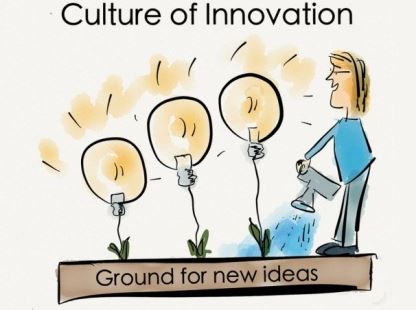Innovations in Marketing Strategy – As a marketing graduate, I have been asked on a handful occasions on how best to outline innovations in marketing strategy. In today’s hyper-competitive business landscape, an effective marketing strategy is the key to unlocking success and sustaining growth. As graduate students of marketing, we understand the significance of formulating a well-thought-out marketing strategy that not only attracts customers but also builds long-term brand equity. In this comprehensive guide, we will delve into the intricacies of marketing strategy, exploring its fundamental concepts, elements, and how to craft a winning strategy that aligns with your business goals.
Marketing Strategy Dissertations
Understanding the Basics of Marketing Strategy
Before diving into the depths of crafting a marketing strategy, it is essential to grasp the foundational concepts that underpin innovations in marketing strategy.
Market Segmentation – Market segmentation is the process of dividing a broad target market into smaller, more manageable segments based on common characteristics. Graduate students of marketing must understand the importance of segmentation in tailoring their marketing efforts to the specific needs and preferences of different customer groups. Market segmentation and targeting are not static concepts but evolving strategies that adapt to changing consumer behaviors and technological advancements.
Market segmentation, a fundamental concept in marketing, involves dividing a diverse market into smaller, distinct segments based on shared characteristics or behaviors. This approach recognizes that not all consumers are alike and allows organizations to tailor their marketing efforts more effectively. Graduate students should explore various segmentation criteria, including demographic, geographic, psychographic, and behavioral factors, each providing unique insights into consumer behavior.
Once segments are identified, targeting comes into play. Targeting involves selecting one or more specific segments as the focus of marketing efforts. This strategic decision is essential for resource allocation and message customization. By understanding the characteristics and needs of the chosen segments, organizations can create personalized marketing campaigns, increasing the likelihood of resonating with their audience and building stronger brand-customer relationships.
In today’s digital age, market segmentation and targeting have evolved with the availability of big data and advanced analytics. These techniques remain the cornerstones of successful marketing strategies, enabling businesses to adapt and thrive in an ever-changing marketplace.
Target Audience – Identifying a target audience is a critical step in marketing strategy development. By defining your ideal customer persona, you can tailor your marketing efforts to resonate with their unique needs, behaviors, and preferences.
Identifying the right target audience is a pivotal aspect of marketing strategy. It involves a comprehensive understanding of customer demographics, behaviors, and preferences. By honing in on a specific audience, organizations can allocate resources more efficiently, tailor their messaging to resonate with the intended recipients, and ultimately drive higher conversion rates.
Targeting enables businesses to build meaningful connections with their ideal customers, fostering brand loyalty and advocacy. In today’s data-rich environment, graduate students must grasp the significance of defining and reaching the right target audience, as it forms the foundation of effective marketing campaigns.
SWOT Analysis: A Crucial Starting Point
One of the first tasks in crafting a marketing strategy is conducting a SWOT analysis. SWOT stands for Strengths, Weaknesses, Opportunities, and Threats. This analysis helps graduate students identify internal and external factors that can influence the success of their marketing strategy.
Strengths and Weaknesses – Evaluate your organization’s internal factors, such as your resources, capabilities, and market positioning. Identify your strengths, which you can leverage, and your weaknesses, which require improvement.
Opportunities and Threats – Examine external factors, including market trends, competition, and economic conditions. Identifying opportunities allows you to exploit market trends, while recognizing threats enables proactive mitigation strategies.
Crafting Your Unique Value Proposition
A compelling value proposition is the heart of any successful marketing strategy. It defines what sets your product or service apart from competitors and resonates with your target audience.
Unique Selling Proposition (USP) – Your USP should convey why your offering is superior or different from alternatives in the market. It should address the specific needs and pain points of your target audience. The Unique Selling Proposition (USP) is a vital element in marketing strategy. It encapsulates the distinctive qualities or benefits that set a product or service apart from competitors.
A well-defined USP resonates with consumers by addressing their specific needs or pain points. Graduate students should understand that a compelling USP not only attracts attention but also builds brand identity and customer loyalty. Effective USPs communicate value and create a memorable brand perception, contributing to the success of marketing campaigns in a crowded marketplace. Crafting a unique, resonant USP is a strategic imperative for businesses seeking a competitive edge.
Clear Brand Identity -Building a strong brand identity is integral to your marketing strategy. Graduate students should ensure that their brand message, visual elements, and tone of voice are consistent and aligned with their value proposition.
A clear brand identity is fundamental in conveying a brand’s values, personality, and promises consistently across all touch points. It involves defining elements such as the brand’s logo, color scheme, typography, and tone of voice. This identity acts as a visual and emotional anchor, allowing consumers to recognize and connect with the brand effortlessly. Graduate students should recognize that a well-defined brand identity builds trust, fosters brand loyalty, and sets the stage for effective, cohesive marketing strategies.
Developing Marketing Objectives and Goals
Effective marketing strategies are goal-driven. Establishing clear objectives and goals is crucial for tracking progress and measuring the success of your strategy.
Specific, Measurable, Achievable, Relevant, and Time-Bound (SMART) Goals:
Graduate students must craft SMART goals that are specific, quantifiable, attainable, relevant to the strategy, and bound by a timeframe. These goals serve as benchmarks for success.
Key Performance Indicators (KPIs) – Identify the KPIs that will be used to measure the performance of your marketing efforts. These may include metrics like website traffic, conversion rates, and customer retention.
Selecting Marketing Channels – Selecting the right marketing channels is essential for reaching your target audience effectively. Graduate students must consider the following:
Digital Marketing – In today’s digital age, online channels such as social media, email marketing, search engine optimization (SEO), and pay-per-click (PPC) advertising play a pivotal role. Choose the channels that align with your audience’s online behavior.
Digital marketing encompasses a wide array of strategies and channels, from social media and content marketing to SEO and email campaigns. It leverages the vast online landscape to reach and engage target audiences effectively. In today’s digital age, graduate students must grasp the dynamism of digital marketing, where consumer behaviors, algorithms, and platforms continuously evolve.
By understanding this multifaceted field, marketers can harness the power of digital marketing to expand their reach, enhance brand visibility, and drive conversions in an increasingly interconnected world.
Traditional Marketing – Depending on your target audience and industry, traditional marketing channels like print advertising, direct mail, and television can still be effective. Evaluate their relevance to your strategy.
Traditional marketing comprises strategies that have been fundamental to the field for decades, including print advertising, direct mail, television, radio, and outdoor advertising. These methods, though considered “traditional,” remain relevant in certain contexts and industries.
For graduate students, it’s essential to recognize that traditional marketing channels offer unique advantages, such as broad reach and tangibility. Understanding when and how to integrate traditional marketing into a comprehensive strategy is crucial, ensuring a well-rounded approach that capitalizes on both digital and traditional channels to achieve marketing objectives effectively.
Implementation and Execution
Once your marketing strategy is in place, the execution phase is where the rubber meets the road. Graduate students should:
Create a Marketing Calendar – Develop a detailed timeline that outlines when and how each marketing activity will be executed. This helps ensure consistency and accountability.
Allocate Resources – Ensure that you have the necessary resources, including budget, personnel, and technology, to implement your strategy effectively.
Continuous Monitoring and Adaptation
Marketing strategy is not static; it requires continuous monitoring and adaptation to remain effective. Graduate students should:
Regularly Analyze Data – Use data analytics to track the performance of your marketing efforts. Adjust your strategy based on the insights gained from customer behavior and performance metrics.
Stay Informed – Keep abreast of industry trends, market shifts, and emerging technologies that may impact your strategy. Adapt and innovate to stay ahead of the competition.
Conclusion Innovations in Marketing Strategy
In the ever-evolving world of marketing, graduate students must master the art of crafting effective marketing strategies that drive business success. By understanding the basics, conducting a SWOT analysis, developing a compelling value proposition, setting clear objectives, selecting the right marketing channels, and executing with precision, you can create a strategy that resonates with your target audience and achieves your business goals. Remember that successful marketing is an ongoing journey, requiring continuous monitoring, adaptation, and innovation to stay ahead in the competitive landscape.
References
Kotler, P., & Armstrong, G. (2017). Principles of Marketing. Pearson.
Payne, A., & Frow, P. (2014). Developing a wider perspective on corporate reputation management. Journal of Brand Management, 21(9), 693-699.
Pulizzi, J., & Barrett, N. (2015). Content Inc.: How Entrepreneurs Use Content to Build Massive Audiences and Create Radically Successful Businesses. McGraw-Hill Education.
Hsu, C. L., & Tsou, K. H. (2019). How social media influencers build a brand? Strategies and challenges. Sustainability, 11(7), 1868.
Kaplan, A. M., & Haenlein, M. (2010). Users of the world, unite! The challenges and opportunities of Social Media. Business Horizons, 53(1), 59-68.
Lee, M., & Youn, S. (2009). Electronic word of mouth (eWOM): How eWOM platforms influence consumer product judgment. International Journal of Advertising, 28(3), 473-499.
Smith, A. N., & Noble, S. M. (2014). The impact of social media usage on consumer purchasing behavior. Journal of Retailing, 90(3), 363-376.
Kim, A. J., & Ko, E. (2012). Do social media marketing activities enhance customer equity? An empirical study of luxury fashion brand. Journal of Business Research, 65(10), 1480-1486.
Escalas, J. E. (2007). Narrative processing: Building consumer connections to brands. Psychology & Marketing, 24(8), 713-741.
Innovations in Marketing Strategy Relevant Posts
Marketing Strategy Dissertations
Science Marketing and Art Marketing
Did you find any useful knowledge relating to innovations in marketing strategy in this post? What are the key facts that grabbed your attention? Let us know in the comments. Thank you.


